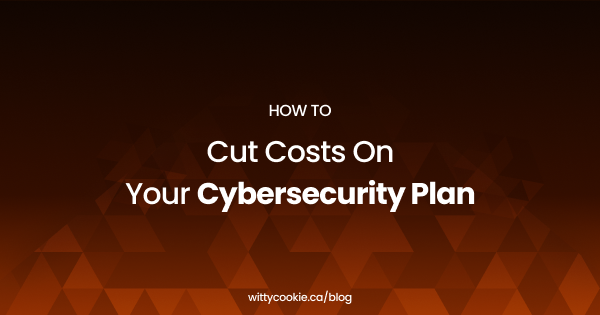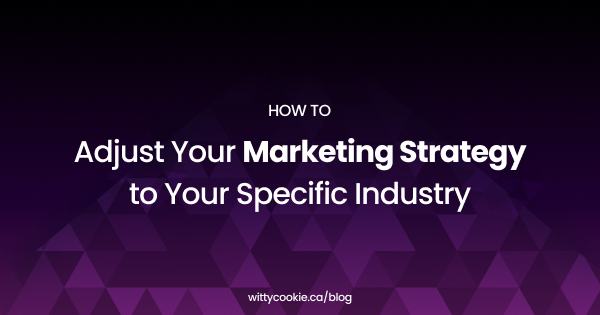How To Bring Easy Personalization To Your Brand’s Marketing Strategy
A personalized service is the cornerstone of the retail industry. If you walk into your favorite restaurant and are greeted by the waiter by your name and a with smile, you’re already feeling warm and fuzzy inside.
That’s the crux of personalization: more and more, we’re finding that consumers demand and expect a personalized experience from brands, from the products they’re offered to the marketing they’re presented.
And if it’s not already a part of your brand’s marketing strategy, it needs to be.
Here are some easy tips to get you started.
Why now is the time to invest in personalization
In the modern era of social commerce, there is nothing better than offering a personalized service to your online customers.
From custom campaigns and social media messages, to engaging ad sequences and non-invasive popups, investing in elegant personalization will help you improve customer lifetime value across the board.
Want easy ways to get ready to personalize your strategy? Embrace easy user generated content tools like Yotpo to help you personalize customer comms, trawl through reviews, and generally get better at knowing who you are talking to. Or, use a tool like Fullstory to improve your sales funnel. If you are looking into doing more with your sales funnel, you may be interested in checking out these sales funnel templates that might be able to help you. There is no point in investing in sophisticated user journeys and AI automation if you haven’t got the basics right first. Automation is becoming a more popular way of marketing with small businesses as it gives them a way to interact with their customers as well as giving their customers a way to interact with them. Engagement is becoming more of a buzzword among businesses who use social media for this reason. Having customers who are interested in voicing their experience could be seen as small businesses and companies trying to personalize their marketing by hearing about their customers’ journeys. Social media is a great way of doing this; Facebook, Twitter, Snapchat and Instagram are great ways of allowing engagement with customers, and with automated tools – such as this instagram like bot by Kenji a social media automation company – businesses can achieve this.
You can never have too much data
Data is the key to personalization, as it is the foundation upon which your strategy will be built. Without customer data, your campaign will fall at the first hurdle.
As a brand, you have access to a potential goldmine of data, and it’s up to you to gather as much as possible wherever you can. Names, genders, birthdays, locations, shopping habits, most viewed items, preferred types of products, even the type of device they shop on – the list is virtually endless. All this and more is at your fingertips, and it’s vital to your marketing strategy.
So how do you gather this? Well, the basic things like names and birthdays can be sourced relatively easily, through social media plugins or sign-up forms required at point of purchase. For more granular data, look to tools like Google Analytics and Google Tag Manager. If you’ve got an ecommerce store, you will also have an array of free plugins and widgets at your disposal to track and gather customer data, or if you’re on WordPress — check out this Monster analytics guide. Spend time getting set up with the right data ecosystem, and don’t be afraid to ask for help from an agency or consultant if you are struggling.
Customer surveys- such as onboarding forms – are also a super handy way to learn more about your customers. People generally love talking about themselves, so a short survey once or twice a year is a chance to find out what makes them tick. Ask them about their interests, what they look for in a brand, what they do in their leisure time — you’ll find they’ll be willing to tell all.
That said, you must ensure that your customers know that their data is safe with you, and that you will not sell it on to a third party. Break that promise, and your brand could suffer irreparable damage.
Once you have this data, you can gradually start to build up profiles of your customers, based on who they are, what and when they buy, and so on. These are known as buyer personas.
What is a buyer persona?
Buyer personas are fictionalized, general portrayals of your ideal customers. These will be informed by a wealth of data, and not just basic things like age or gender. They will also encompass factors such as their interests, their concerns, what motivates their purchases and where they research before making a purchase.
A brief example of a buyer persona would look like this:
Sarah Smith
- Age: 35
- Job: Receptionist
- Location: inner city Chicago
- Family: married with two kids
- Motivations: wants plus-size clothing that is stylish as well as comfortable
- Pain points: struggles to find plus-size clothing in brick-and-mortar stores, or the items she does find are unfashionable
You might have dozens and dozens of these buyer personas, covering a wide variety of generalized fictional customers depending on your business. The stay-at-home mum who wants to start her own business, the seasonal shopper who only makes purchases once a year — they will be numerous and diverse.
However, once you have them, you’ll be able to know your customers inside and out. And once you do, you’ll know what they want — and how your brand can give it to them.
To that end, tailor your marketing strategy to your customer’s needs. It can be simple, such as sending them a discount voucher on their birthday. But you can take it further and make it more specific by offering them useful content related to their motivations, interests and pain points.
For example, an online camping store might notice that a shopper is looking at camping stoves. They might then offer them a list of the highest rated stoves via e-mail, along with associated equipment that they might be interested in, such as pots and pans. Recognizing a customer’s buyer journey will help you guide them through your marketing funnel with useful and relevant product information.
Taking personalized marketing further
So you know what to show your customers, but how? Well, your first port of call should be your email marketing. Once you have someone’s email address, you have a golden ticket to their inbox. However, you’re not going to be the only brand vying for their attention, so you need to make your emails pop.
Your customer data is going to make that happen. Emails with customer names in the subject line receive 29% higher unique open rates, with 41% higher click-through rates. And once they’ve opened that email, you can offer them your related products, useful content and birthday discount codes to reel them in.
You can even take it one step further by showing different versions of your website to each different persona. For example, an email link might lead a mother-of-three to a landing page featuring family-related products that are wholly different to those experienced by a single millennial customer. Personalization like this will really make your customer feel unique and can boost sales through the pushing of related products.
Personalization is the icing on your marketing cake. It can take a good campaign and turn it into a dazzling one. Making your customers feel cared about and attended to can ramp up your sales and make a loyal customer out of a one-time shopper. They key is to mine all the data you can, no matter how granular. Once you’ve got that, you can personalize your marketing easily, and see your brand’s business soar.
If you need help with your web design in Vancouver, please visit http://www.wittycookie.com/web.html to find out more about our services!



